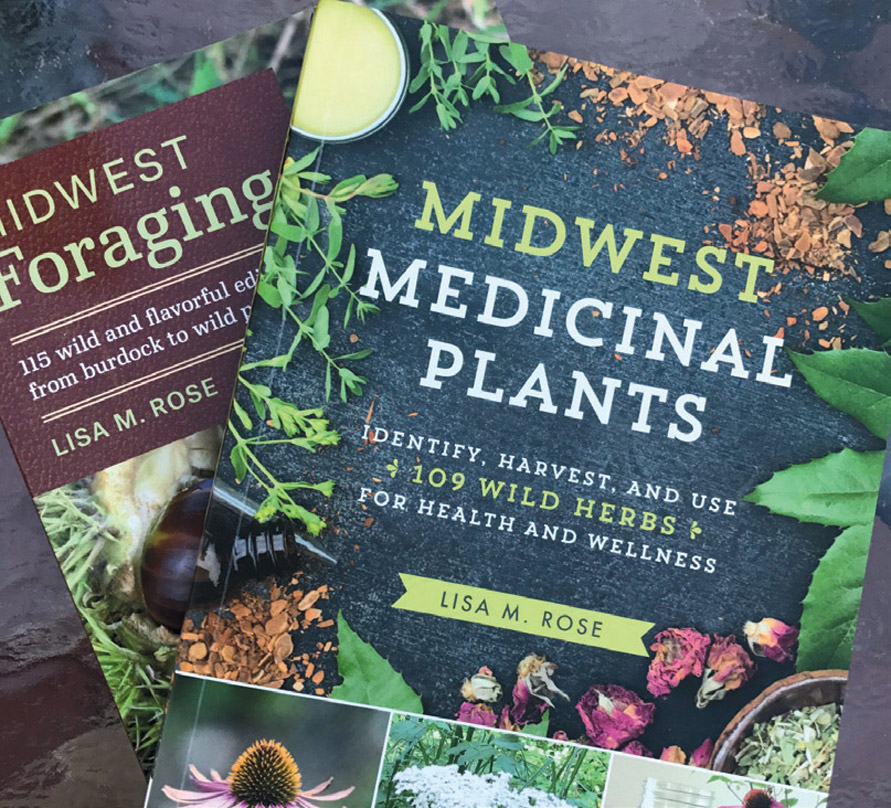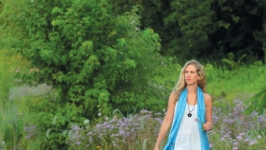Uncovering Our Wild-Food Heritage
Those first green shoots of dandelion popping up in a muddy yard are a sure sign spring has arrived. As the maple sap begins to run, wild-food aficionados cast their eyes to the ground, searching for the first tender violets, chicory and watercress.
“Early spring is a lovely time to forage,” says herbalist and forager Lisa Rose. “As the snow melts back from the fields and woodlands, the early greens of spring begin to poke through the ground. Many wild leafy greens are best gathered in the cooler weather of the early spring before they grow larger and the increasing heat of the spring and summer changes their flavor.”
Foraging, simply put, is searching for wild food. If you’ve ever tapped a maple tree, picked wild morels or gone fishing or hunting, you are, to some degree, a forager
When the U.S. was being settled, foraging was a matter of survival. Laura Ingalls Wilder wrote of how her Pa, while homesteading in Wisconsin, hunted, salted and smoked deer to get the family through the winter. The family tapped maple trees in spring, foraged for honey in summer, dried wild berries and gathered tree nuts.
In the 1930s, the young Euell Gibbons foraged to supplement his diet during the Great Depression. He later wrote Stalking the Wild Asparagus. “That’s how a lot of people survived the ‘30s,” says Rachel Mifsud, founder of the website WillForageForFood.com. “My parents were hippies, so I just kind of grew up with it,” she says. “It was part of the lifestyle.”
Today, foraging “is definitely more central to the way I eat. It became a hobby as well. It’s a hobby that expanded into the way I cook,” she says. Living in the countryside near Jackson, about half of what she forages comes from her own land. “I’m out there all year.”
Minjung Godfrey grew up foraging in Korea. Now living in Midtown Detroit, “My territory is all walkable,” she says. Fruit trees, pine needles, mint, rose hips and plenty of leaves and shoots are all available for food, tea and herbal remedies. “It is important to develop territory first before you go out foraging, because you need to know the history,” she says. Safety is in knowing not just the plants you are harvesting, but the environmental conditions they have grown in. “In the city I usually avoid foraging from the ground.”
With so much vacant land in Detroit, she feels historically residential lots are safe, but avoids areas that were previously industrial. For example, clover is common, but “they tend to accumulate metals, so those are not safe to forage.” In urban areas, she also considers her personal safety. “You have to be aware; is it safe to park, if it is in general safe for you.”
“I absolutely harvest from areas I am confident are free from soil and water contamination,” Rose, of Grand Rapids, says. “That means not only knowing the history of use of the soil, but also knowing where the land is in relation to any potential upstream contamination if it’s along a waterway. Basically, if you can’t be assured the soil is free of contamination, I don’t recommend harvesting.”
Even in your own yard, Rose recommends soil testing to rule out contamination. Lead is chief among her concerns. Three years free of chemicals is a good benchmark, she says. “That said, fruits and vegetables produced in commercial agriculture have high levels of chemical residue from pesticides and herbicide applications. So sometimes I think it’s fine if I nibble on dandelions from a park or neighbor’s yard.”
Learning which plants are safe to eat, and what you like and don’t like, requires commitment. “A lot of these taste so strange, especially for people who are used to McDonald’s,” Mifsud says. Classes, guided walks, MeetUps and camps are available for those who want to take a deeper dive. “Don’t just go grazing; learn them first,” Mifsud says.
It’s also important to consider ownership of the land. Most public parks have posted rules about taking plants; for private land, get permission. With abandoned residential land, “in a general rule you go and gather,” Godfrey says.
Once you’ve invested time in educating yourself, it’s important to harvest sustainably so you can return again and again. How and when to pick are crucial. “You want to make sure you’re being a steward while you’re out there,” Mifsud says.
Foraging ticks off a lot of boxes when it comes to eating better. It’s local, seasonal and nutrient-dense. “Wild plants haven’t had that modification like the fruits and vegetables in the grocery store,” Rose says. “Wild plants have evolved to grow in extreme conditions with little coddling, and yield high nutrients as opposed to domestic fruits and vegetables.”
But there’s another benefit--spending time in nature. Clay Bowers, who got into foraging in southeast Michigan and now lives in Traverse City and forages extensively, feels that connection deeply. “Foraging was my entryway,” he says. “I just started to see the benefits of just being in the woods, helping nature by foraging, if you do it correctly. …
“Foraging cannot only bring you food, but it can bring you a greater connection to the land in general,” he says. “You can gain a greater appreciation to the land around you. And if we don’t have any connection to the land, we will pave over it.”
House Favorite - From Clay Bowers (NoMiForager.com)
Since hickory nuts are difficult to shell, he pounds them into a powder using bricks. The milk has an intensely pecan flavor (the two nuts are related).
Boil crushed hickory nuts in water, shell and all, 20-30 minutes. Strain off the liquid. You now have hickory milk. Use this milk to cook wild rice. For a sweeter version for his kids, ages 5 and 8, he adds wild blueberries and maple syrup. “It’s all wild and really delicious.”





